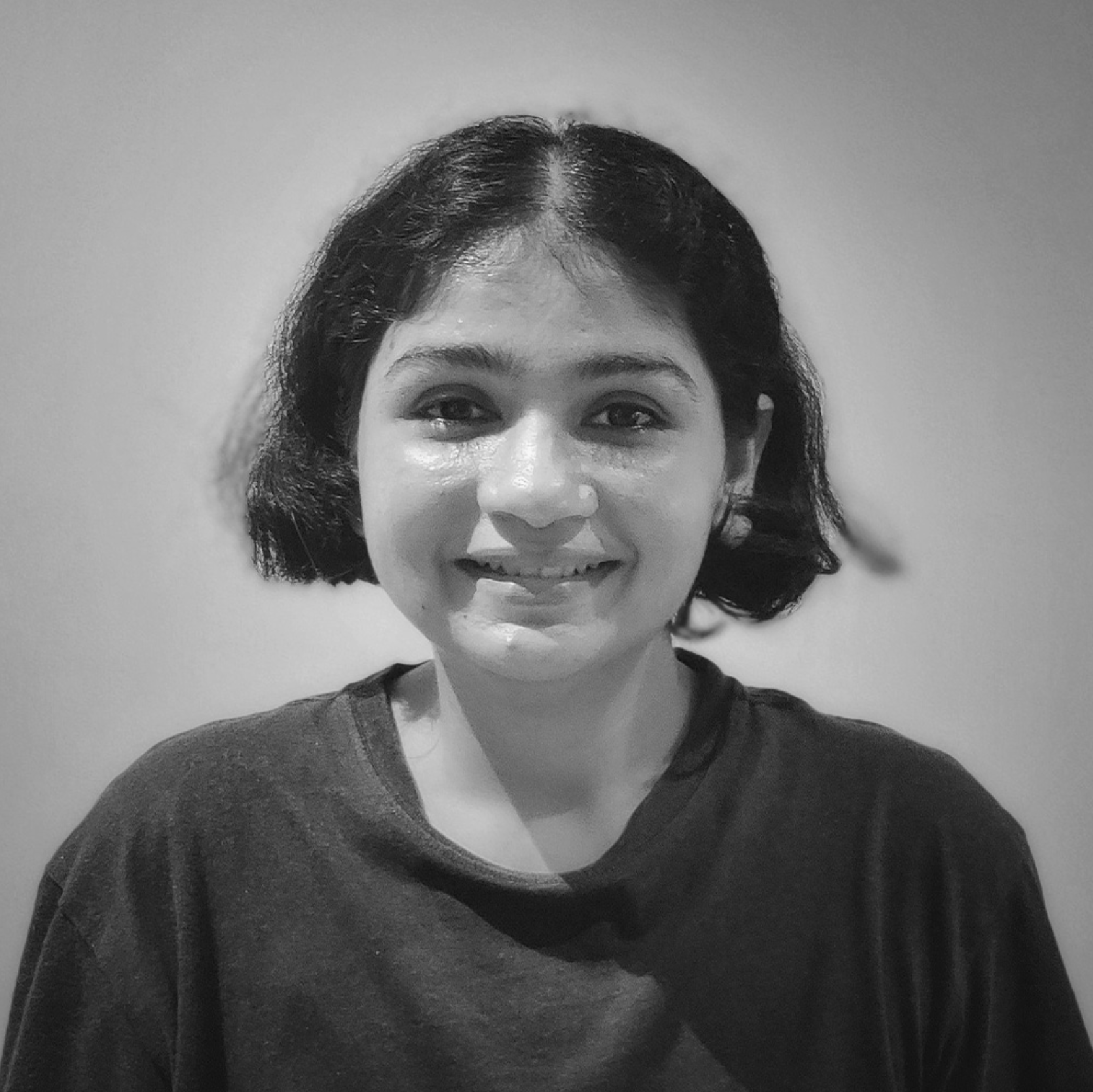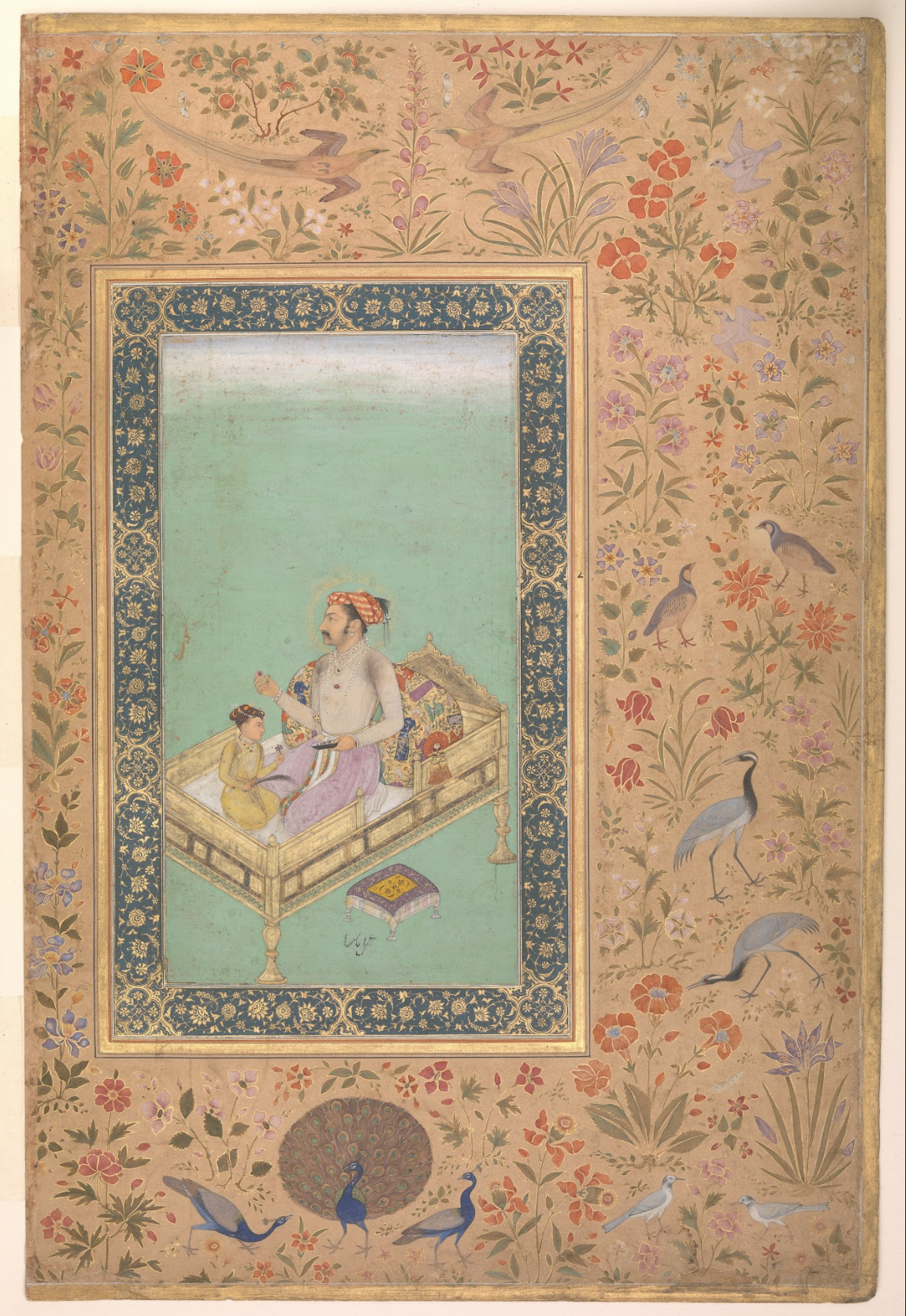
From ancient Buddhist monuments to medieval royal temples and the syncretic visual world of the Mughal court, art in the Indian subcontinent reveals a deep history of patronage. As a system of exchange, patronage also reveals underlying expressions. The inscriptions of donors at Buddhist sites at Sanchi, Amaravati, Karle, Nashik and Kuda, among others, reveal a diverse array of faithful patrons—gardeners, fisherfolk, merchants, traders, monks and nuns—brought together by a shared religion. [1] On the other hand, the idealised portraiture of Chola royals in southern India—which incorporate religious symbolism—and Jehangir’s allegorical portraits, project real and desired imperial power. [2] It was in the late 19th and early 20th centuries that patronage, as we know it today, began taking shape in the Indian subcontinent, even as artists moved towards ‘modern’ forms of art. These changes, too, were underpinned by political intentions, this time by the British.
New Nations, New Art Movements: Patronage and Accessibility Transformed
The British systems of art education in the Indian subcontinent, beginning with the formation of art schools in the three Presidency cities of Madras, Bombay and Calcutta (now Chennai, Mumbai and Kolkata) in the 1850s, solidified Western art techniques and pedagogies in the region. These systems found support from the British as well as Indians such as Jamsetjee Jeejeebhoy, who laid the foundation of an art school, the Sir JJ School of Art, in Bombay (now Mumbai). These pedagogies created distinctions of ‘fine art’—which the British thought the subcontinent lacked, outside of its antiquities—and ‘applied art’, referring to a host of crafts practices believed to be in decline. [3] Artists such as Raja Ravi Varma and M. V. Dhurandhar, whose works exemplified the changing tastes of patrons, combined Western techniques of oil painting with Indian religious themes and subjects. Even as Ravi Varma’s paintings were patronised by influential, wealthy individuals, through his own printing press, his affordable and widely circulated chromolithograph prints attracted a new group of art patrons, the emerging Indian middle class.
The arrival of print technology, and the emergence of art salons and open exhibitions, enabled British and Indian artists to reach the wider public, and changed the nature of art spaces, viewership, and therefore, patronage. Historical forms of patronage, particularly in the courts, had provided artists a degree of economic security. As this support declined, the artist emerged as a standalone figure, with an acknowledged status outside such formal systems. [4] The echoes of these changes are apparent even today.
In recent decades, art has been made, collected, and accessed in more fluid ways. Since the 2000s, technology and multimedia manifestations have made art accessible through various platforms. At the same time, patronage has morphed. Whilst it is shaped by commercial exchanges, it has also developed more organically in the modern Indian subcontinent, as we see in Mumbai and Delhi in post-Independence India.
From the 1940s to the 1970s, avant garde artists, such as the Bombay Progressive Artists’ Group, benefited from the support of art critics including Rudolf von Leyden and Mulk Raj Anand, as well as Mumbai-based gallerists, Kekoo Gandhy (founder of Chemould, Prescott Road) and Kali Pundole (founder of the gallery and now auction house, Pundole). They were also supported by collectors such as Emanuel Schlesinger, Walter and Kathë Langhammer, Homi Bhabha—who created a valuable collection of works by breakout Indian modernists at the Tata Institute of Fundamental Research—and Jehangir Nicholson, who loaned parts of his extensive collection to other institutions, and, as a legacy, expressed the desire for his art collection to be made public. [5] Friendships between artists, patrons and critics were also significant in shaping the Delhi art scene in these decades, through institutions like Dhoomimal Gallery, Kumar Gallery and Vadehra Art Gallery. [6]
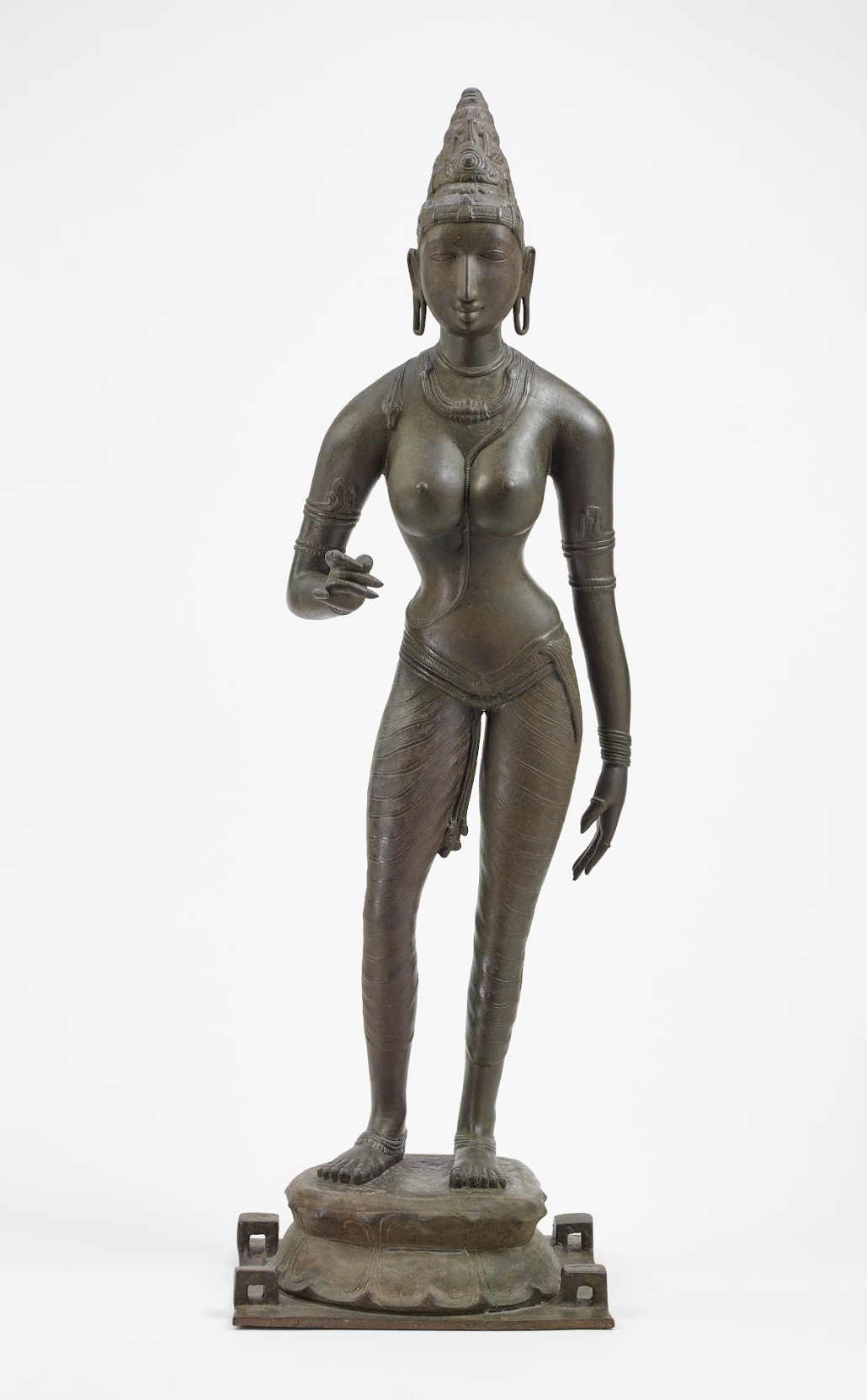
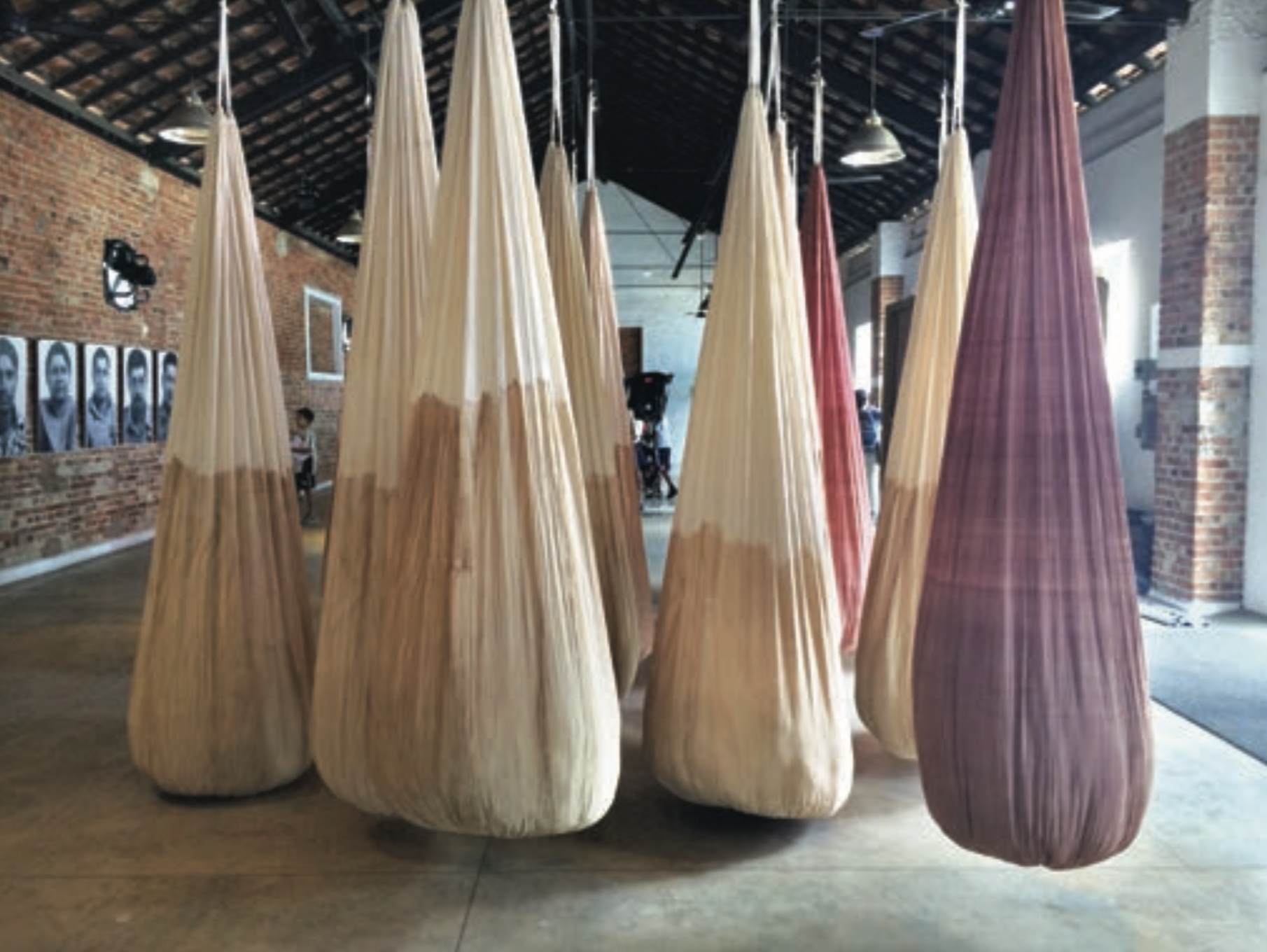
Over the last three decades, support for contemporary art in the Indian subcontinent has taken on different forms. Through wider forms of engagement, newer patrons have emerged, including the wider public, collectives, organisations and institutions, alongside reinvigorated support from wealthier individuals, the state and those in power. In the context of large-format festivals—key spaces for video and multimedia, installation and performance art—we also see different forms of patronage becoming manifest. Whilst the Dhaka Art Summit is funded by the Samdani Art Foundation, established by art collectors and entrepreneurs Rajeeb and Nadia Samdani, the Kochi-Muziris Biennale held in India derives funding from the Kerala state government and private patrons, including corporate sponsors. [7] Elsewhere, in the models embodied by newer museums, we see institutions patronise work for posterity. Kiran Nadar has founded a museum in Delhi to showcase her private collection, and collaborates regularly with global institutions. The Taragaon Museum in Kathmandu, under the aegis of the Saraf Foundation for Himalayan Traditions and Culture, established by Arun and Namita Saraf, is working to create a repository of the architectural history of Nepal. [8] In Pakistan, art historian Iftikhar Dadi has highlighted how privately funded art colleges— such as the Indus Valley School of Art and Architecture, Karachi and Beaconhouse National University, Lahore— supplement the government-run National College of Art, Lahore and spur a sense of experimentation led by well-known artists who teach at these institutions. [9]
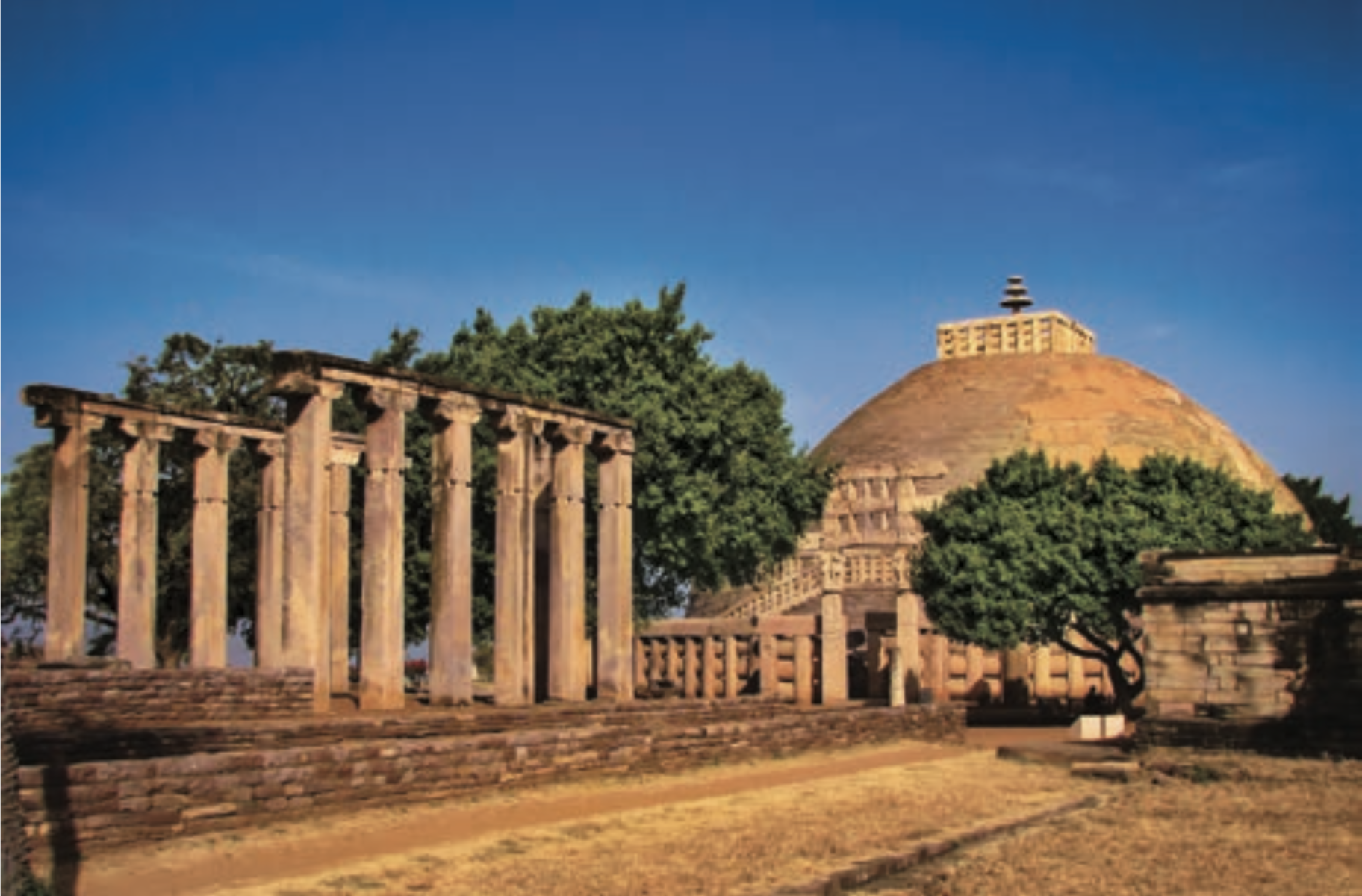
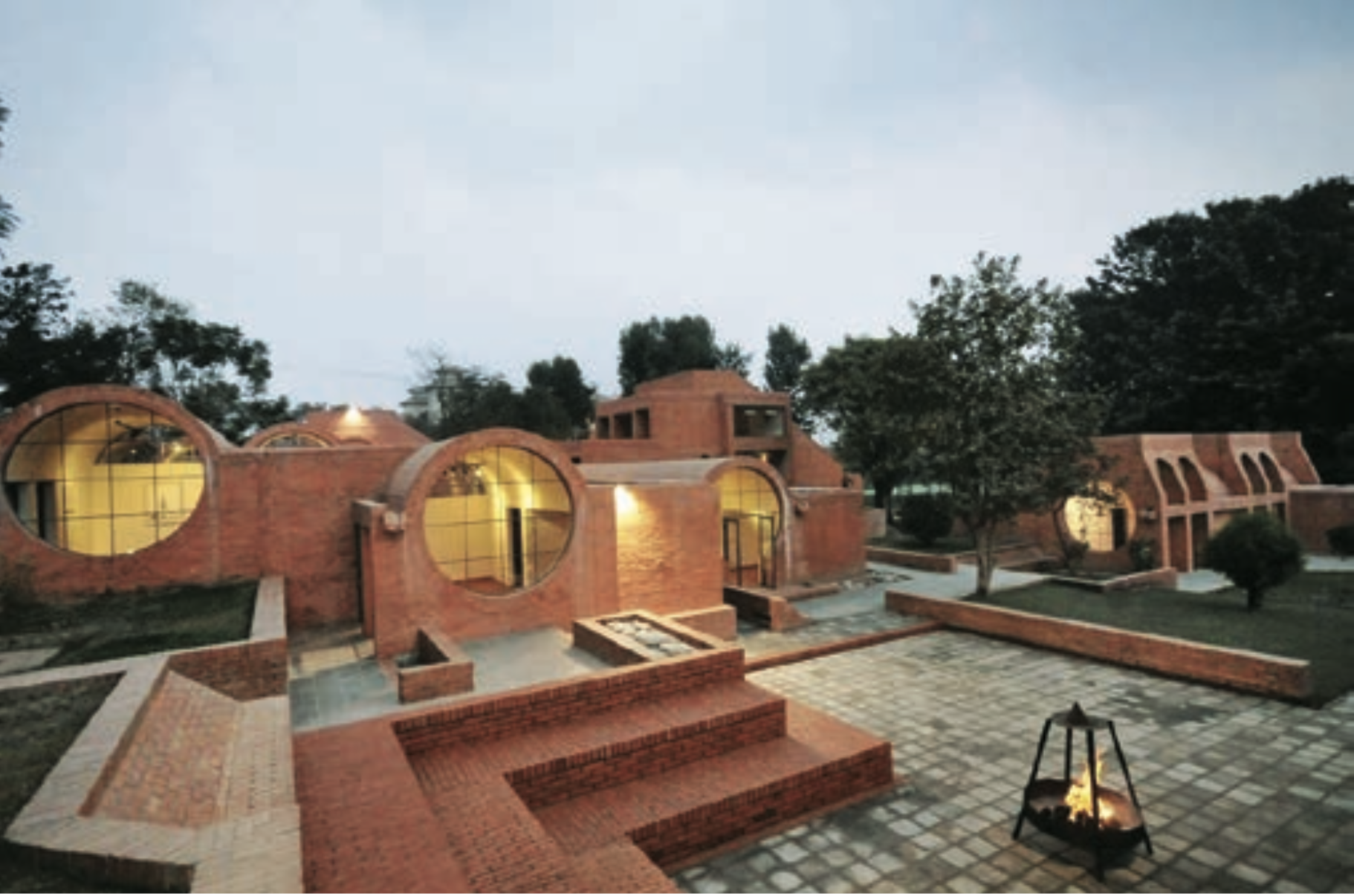
Artists, too, in recent decades, have become patrons, by providing peer support through collectives and organisations that attract funding from various sources. The South Asia Network for Arts, founded at the turn of the millennium, brought together the not-for-profit collectives KHOJ (India), Vasl Artists’ Association (Pakistan), Theertha International Artists Collective (Sri Lanka) and Britto Arts Trust (Bangladesh) through workshops, residencies and exchange programmes that engaged with contemporary art practices
and, at a wider scale, served as a platform for regional art. [10] In Sri Lanka, Theertha evolved from the ’90s Trend, an art movement shaped by artists from non-elite backgrounds, whose art practices and works engaged with the political violence and complex social conditions of the country in the 1980s and ’90s. The movement gained crucial support from spaces such as Heritage Art Gallery (founded by the art collector Ajitha de Costa) and 706 Gallery (now Barefoot Gallery, founded by Dominic and Nazreen Sansoni) and artists associated with the movement, such as Chandragupta Thenuwara and Jagath Weerasinghe, who played active roles in promoting art education through Vibhavi Academy of Fine Art and in events such as the Colombo Art Biennale. [11]
In Bhutan, the Voluntary Artists’ Studio Thimphu (VAST), founded by the artist Kama Wangdi (also known as Asha Kama), has helped create a space for discussion and the exhibition of contemporary art that is emerging from the codified world of Buddhist religious art. [12] The organisation, which also includes volunteer member-artists, places art in direct social contexts, through education and issue-based projects. More recently, during the Covid-19 pandemic lockdowns, two Delhi-based artists, Purvai Rai and Ayesha Singh, initiated Art Chain India, a project to connect artists and buyers through social media platforms, with pledges to contribute towards supporting other artists. [13] These instances from the Indian subcontinent show how art patronage today can assume many forms. The potential for collaboration and tools like social media allow individual, institutional and emerging patrons to build channels which enable greater public access to art, and engage significantly with diverse artforms in the public sphere.
Patronage Today: Forms, Methods, Players
Who is an art patron today? A common answer to this question would be a ‘collector’—an individual who buys works of art. One may think of patrons as typically affluent sponsors of projects, who may contribute to or found arts institutions, or even commission artists. However, as we have seen, a patron does not have a fixed identity.
Institutional frameworks that support art-based exchanges—from art galleries and auction houses to public art events such as biennials and triennials, art journals, websites and other publications—have become both patrons—benefactors to artists and society— and beneficiaries of patronage from individuals and corporations. Corporate organisations not only collect art, they also support its production and public display through corporate social responsibility programmes. For art galleries,
art is a business, even as they build networks connecting artists, collectors and critics, who in turn support each other’s work.
Above all else, the state, as a political entity at various levels of governance, is a meta-patron. It controls public museums and systems of art education; it has the mandate to support traditional art forms and living traditions, and can privilege one over the other. For the state, art patronage is an exercise
in soft power as well as a means of shaping public opinion, as an arbiter and censor of what it considers acceptable. Significantly, the state also controls systems of private art patronage in ways that are not immediately apparent, but always present.
Navigating Motivation, Markets and Obligations
The arts sphere of the subcontinent today is shaped by the economic liberalisation of post-colonial nations and private wealth generation. This has happened alongside social and political upheavals, while the state’s infringements on funding, curatorial and programming choices have also influenced the production and support for art. Does patronage—influenced by the market forces, and shaped by the economic, political or social elite—privilege certain types of art practices, themes or formats? How does such a system react to and influence art that is explicitly provocative or dissenting? Is such art presented to different audiences or is it tucked away lest it upset those in power? In trying to maintain a balance between economic prosperity and political favour, how do systems of patronage react to artists who face opposition from political groups in the country?
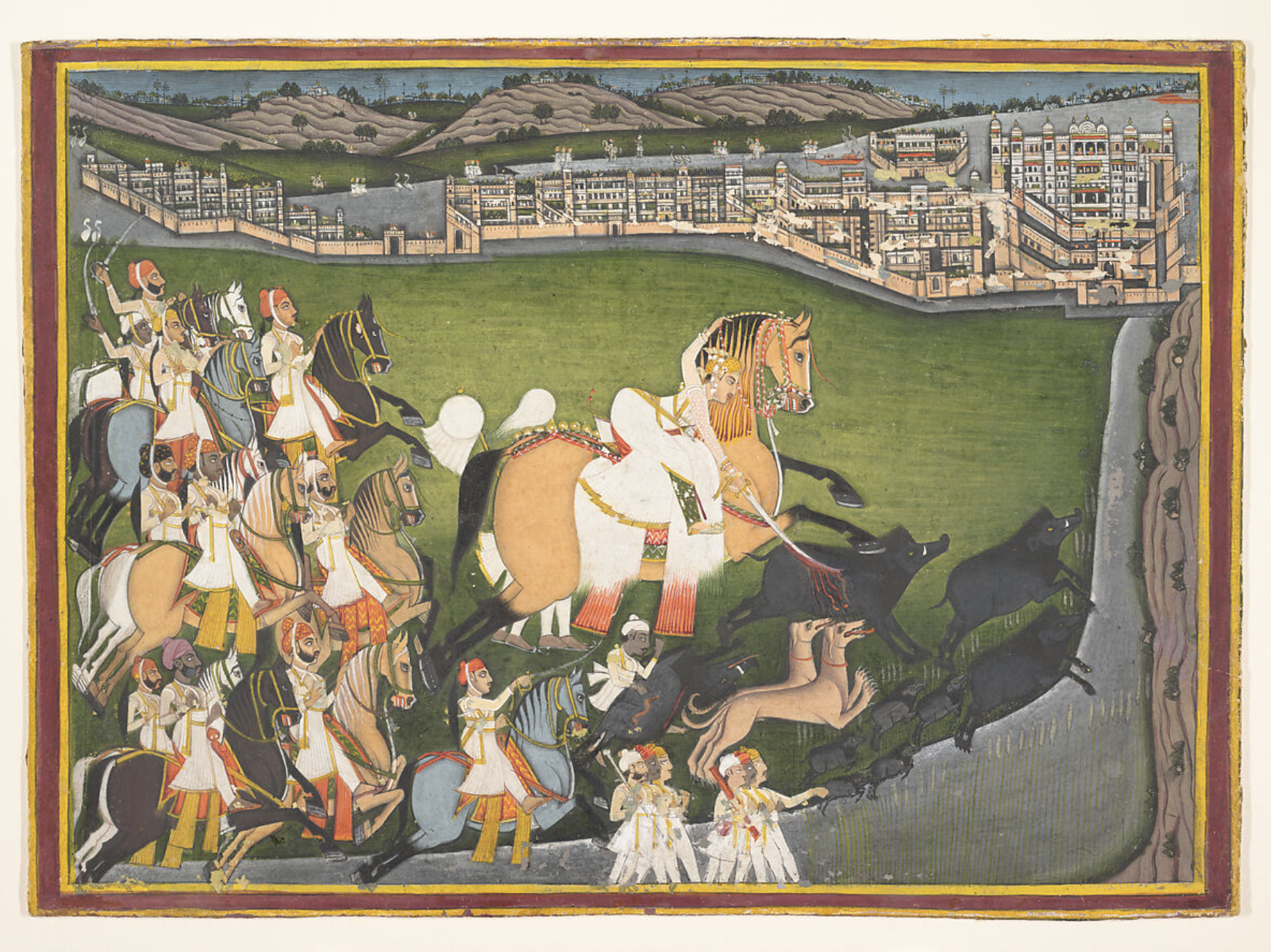
At their core, modern forms of art patronage reflect mixed motivations, in
which the art market plays a key role. Individual interests in art are significant, but contemporary art’s ascendance as an asset class has also drawn buyers for whom works of art are monetary investments, influenced by provenance. Despite some democratisation, art collecting at an individual level, and patronage by extension, remain markers of economic status and social cache. This social cache, by association with an institution or an event, is also a factor in corporate patronage. And it is these motivations that fuel debates and challenges around patronage.
At their core, modern forms of art patronage reflect mixed motivations, in
which the art market plays a key role. Individual interests in art are significant, but contemporary art’s ascendance as an asset class has also drawn buyers for whom works of art are monetary investments, influenced by provenance. Despite some democratisation, art collecting at an individual level, and patronage by extension, remain markers of economic status and social cache. This social cache, by association with an institution or an event,
is also a factor in corporate patronage. And it is these motivations that fuel debates and challenges around patronage.
To a great degree, patrons control how art is accessed. By choosing to display their collections or by inviting others to engage with it, patrons can be instrumental in building knowledge and encouraging research and even breakthrough discoveries. How can they make the most of this potential? Recognising the positive changes different kinds of support to art have brought in, can there also be a self- examination of patronage and its perceptions of elitism and influence, which inhibits newer ways of accessing art?
Today, we find ourselves in a world where buying a ticket at a museum, attending a public art event, buying a work of art at a local art fair or on online art platforms, or learning about art or volunteering time, is patronage of a kind. Those with affluence and political and cultural standing might continue to be major, recognised patrons, but it is undeniable that there are more ways in which anyone can support, celebrate and encourage artists. To an ordinary individual or a student or someone with limited resources, this might not be apparent, but they too are patrons.
Notes
[1] Romila Thapar, “Patronage and the Community,” In The Powers of Art: Patronage in Indian Culture, ed. Barbara Stoler Miller (Delhi: Oxford University Press, 1992), pp. 19–34; Vidya Dehejia, “Collective and Popular Bases of Early Buddhist Patronage: Sacred Monuments, 100 BC – AD 250,” In The Powers of Art, ed. Barbara Stoler Miller (Delhi: Oxford University Press, 1992), pp. 35–45.
[2] Vidya Dehejia, “The Very Idea of a Portrait,” Ars Orientalis 38 (1998): 40–48. http://www.jstor.org/stable/4629529; John Guy and Jorrit Britschgi, Wonder of the Age: Master Painters of India 1100–1900 (New York: The Metropolitan Museum of Art, 2011), p. 73.
3] Barbara Stoler Miller and Richard Eaton, introduction to The Powers of Art, (Delhi: Oxford University Press, 1992); Partha Mitter, “Status and Patronage of Artists During British Rule in India (c. 1850 – 1900),” In The Powers of Art, ed. Barbara Stoler Miller (Delhi: Oxford University Press, 1992), pp. 277–300.
[4] Partha Mitter, Art and Nationalism in Colonial India 1850–1922 (Cambridge: Cambridge University Press, 1994), pp. 65–66,
[5] Margit Franz, “From Dinner Parties to Galleries: The Langhammer-Leyden- Schlesinger Circle in Bombay – 1940s through the 1950s,” In Arrival Cities:
Migrating Artists and New Metropolitan Topographies in the 20th Century, eds. Bucru Dogramaci, Mareike Hetschold, Laura Karp Lugo, Rachel Lee and Helene Roth (Leuven University Press, 2020), pp. 73–90; Jehangir Nicholson Art Foundation, “About JNAF,” https://jnaf.org/
[6] Bhumika Popli, “How India’s first private art gallery introduced modern masters to the world,” Sunday Guardian, May 5, 2018, https://sundayguardianlive.com/culture/ indias-first-private-art-gallery-introduced-modern-masters-world; Kanika Anand, “How galleries, intellectuals, and patrons have shaped contemporary Indian art,” Art Basel, https://www.artbasel.com/stories/india-art-ecosystem.
[7] “FAQs,” Dhaka Art Summit 2023, https://www.dhakaartsummit.org/faqs
[8] Shailaja Tripathi, “Mission Museum,” The Hindu, May 24, 2013, https://www. thehindu.com/features/friday-review/art/mission-museum/article4746379.ece; Avantika Bhuyan, “How did an architecture archive adapt to the pandemic?” Mint, February 17, 2021, https://lifestyle.livemint.com/how-to-lounge/art-culture/how-did- an-architecture-archive-adapt-to-the-pandemic-111613532717257.html
[9] Iftikhar Dadi. “A brief history of Pakistani art and the people who shaped it,” Scroll.in, September 14, 2017. https://scroll.in/magazine/850531/a-brief-history-of- pakistani-art-and-the-people-who-shaped-it
[10] Karin Zitzewitz, “Infrastructure as Form,” Third Text 31, nos. 2–3 (2017): 341–58. https://doi.org/10.1080/09528822.2017.1380984
[11] Anoli Perera, “Collectivism in the Contemporary Sri Lankan Art: The History of an Unusual Case of Artists,” In Intersections of Contemporary Art, Anthropology and Art History in South Asia, eds. Sasanka Perera and Dev Nath Pathak (Cham, Switzerland: Palgrave Macmillan, 2017), pp. 273–283, 295; Jagath Weerasinghe, “Contemporary Art In Sri Lanka,” In Art and Social Change: Contemporary Art in Asia and the Pacific, ed. Caroline Turner (Canberra: Pandanus Books, 2005), pp. 183–187.
[12] Kinley Wangmo, “The Emerging Contemporary Artscape of Bhutan,” Marg 66, no. 4 (June 2015): 52–61; Jonah Goodman, “Cat Hair, Mud Paint, Rice Banks and the Buddha.” Works that Work, no. 8 (2016–17): https://worksthatwork.com/8/art-in- bhutan
[13] Fiza Jha, “ArtChainIndia, a peer-support movement helping artists tide over the Covid crisis,” The Print, May 17, 2020. https://theprint.in/feature/artchainindia-a-peer- support-movement-helping-artists-tide-over-the-covid-crisis/423288/









